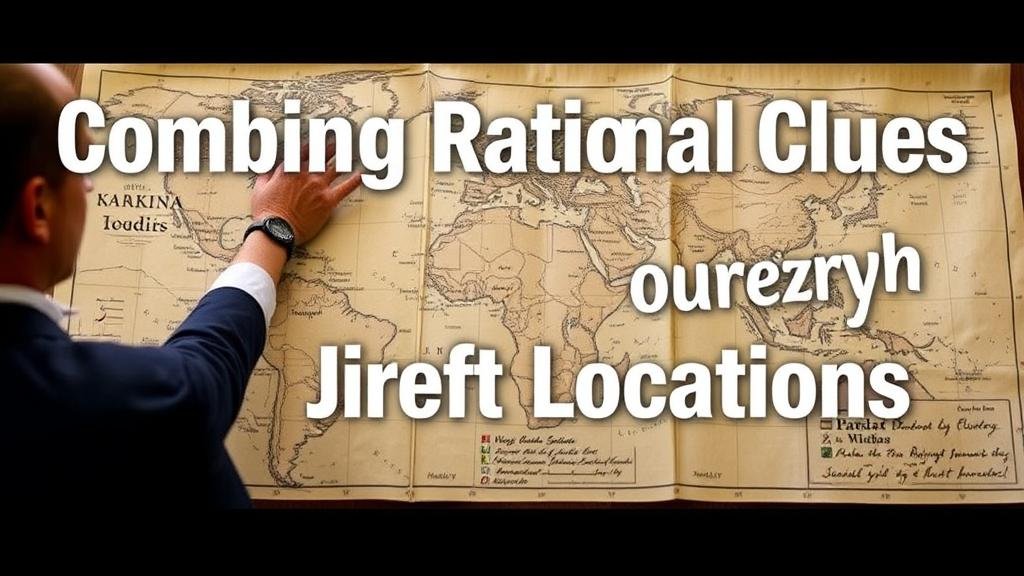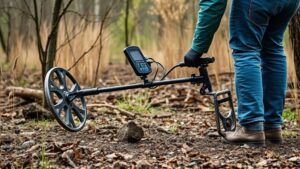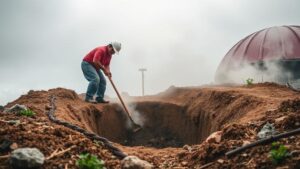Combining Rational Clues From Maps and Journals to Confirm Artifact Locations
Combining Rational Clues From Maps and Journals to Confirm Artifact Locations
The study of archeology often involves a meticulous process of verifying potential artifact locations. This verification can significantly benefit from combining rational clues obtained from historical maps and journals. By understanding how these elements interact and complement one another, researchers can create a more accurate picture of where artifacts might be located. This article explores the methodologies, techniques, and real-world applications of this approach.
The Role of Historical Maps
Historical maps are invaluable tools in artifact location verification. They provide geographical context, showing not only the natural landscape but also human activities and settlements over time. The use of maps enables archeologists to visualize how locations have changed, which in turn aids in understanding where artifacts may still exist.
For example, a historical map of a town from the 18th century can indicate the locations of businesses, roads, and residential areas no longer present today. Knowledge of these locations provides clues to potential dig sites where artifacts related to historical activities might be unearthed. In particular, older maps often show features like old roads or structures that may not be documented elsewhere.
- Example Case Study: The discovery of the 1776 map of Philadelphia helped researchers pinpoint where Revolutionary War relics could be located. Following the parameters set by the map, excavations revealed numerous artifacts related to the period.
Analyzing Historical Journals
Journals and diaries from past explorers and residents can complement the information gleaned from maps. e documents might contain first-hand accounts of daily life, local geography, notable events, or even specific details on where artifacts were found or lost. The subjective experiences detailed within these texts provide context that maps alone cannot convey.
For example, a journal entry highlighting a significant battle might reference nearby landmarks that are noted on historical maps. This correlation can help researchers identify potential locations for further exploration.
- Example Case Study: The diaries of Spanish explorers in the American Southwest provided insights into Native American settlements. By cross-referencing these entries with existing maps, archeologists confirmed various artifact locations associated with these historic interactions.
Integrating Maps and Journals: A Methodological Approach
To effectively combine maps and journals in confirming artifact locations, researchers often follow a structured approach:
- Data Collection: Gather historical maps and journals relevant to the geographic area of interest. Consider both public archives and private collections.
- Geospatial Analysis: Use Geographic Information Systems (GIS) to overlay historical maps with modern geographic data to identify significant changes in the landscape.
- Cross-Referencing: Identify mentions in journals that correspond to features or locations on historical maps. This might involve extracting the location data from the journal entries and geolocating these descriptions on the maps.
- Field Validation: Conduct exploratory fieldwork in the identified locations to search for artifacts, grounding the academic findings in tangible excavation or surface surveys.
Real-World Applications and Implications
Combining maps and journals has transformed not only archeological methods but also advanced our understanding of cultural heritage. This approach has broad implications across various disciplines including history, geography, and anthropology.
Consider the following notable examples:
- The Lewis and Clark Expedition: The journals kept by Lewis and Clark during their exploration of the American West provided numerous details that, when mapped, led to the uncovering of Native American artifacts, reshaping our understanding of the regions history.
- Urban Archaeology in New York City: By analyzing historical maps alongside personal records, archeologists successfully unearthed remnants of colonial structures that had long been thought lost beneath the modern cityscape.
Actionable Takeaways
For those engaged in archeological research or amateur exploration, the following steps can enhance the likelihood of successfully confirming artifact locations:
- Always utilize both historical maps and journals in your research to build a comprehensive understanding of the area.
- Employ modern technologies, like GIS, to visualize and analyze the relationship between historical and modern landscapes.
- Engage with local historians or community members who might have insights or access to additional primary sources.
By integrating rational clues from maps and journals, researchers not only enrich their understanding of the past but also illuminate the pathways to discovering artifacts that tell the stories of human history. This multifaceted approach promotes a clearer, more nuanced picture of where to dig, ensuring that valuable cultural heritage is neither overlooked nor forgotten.


